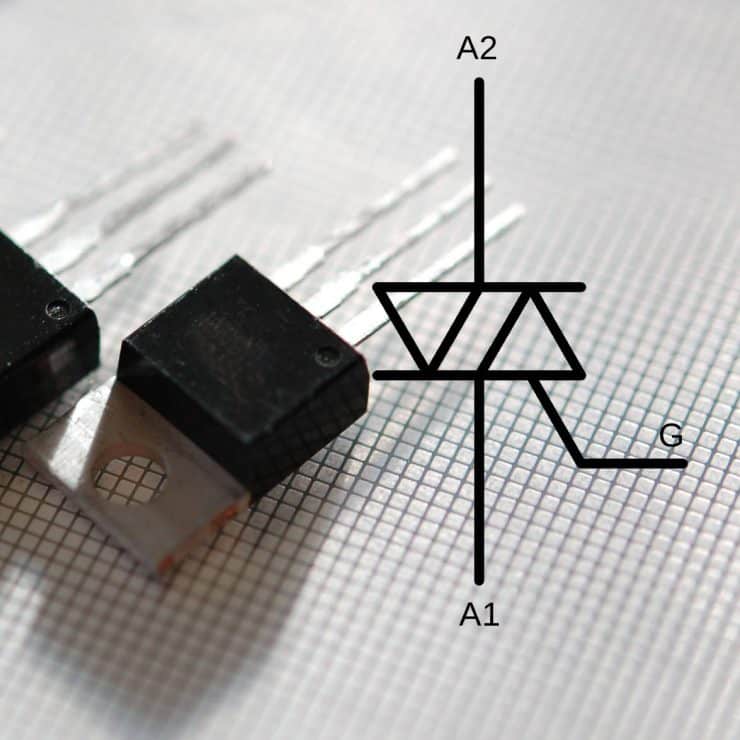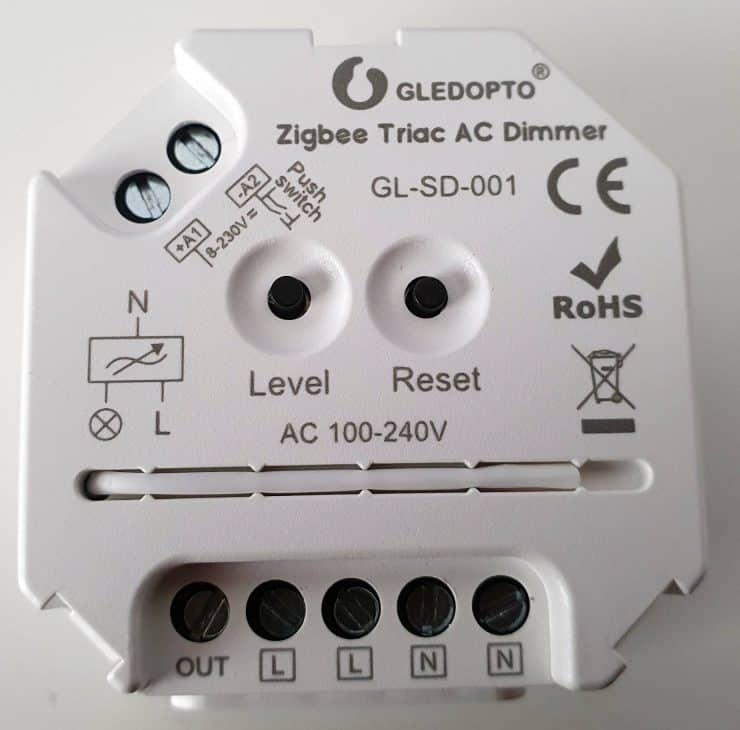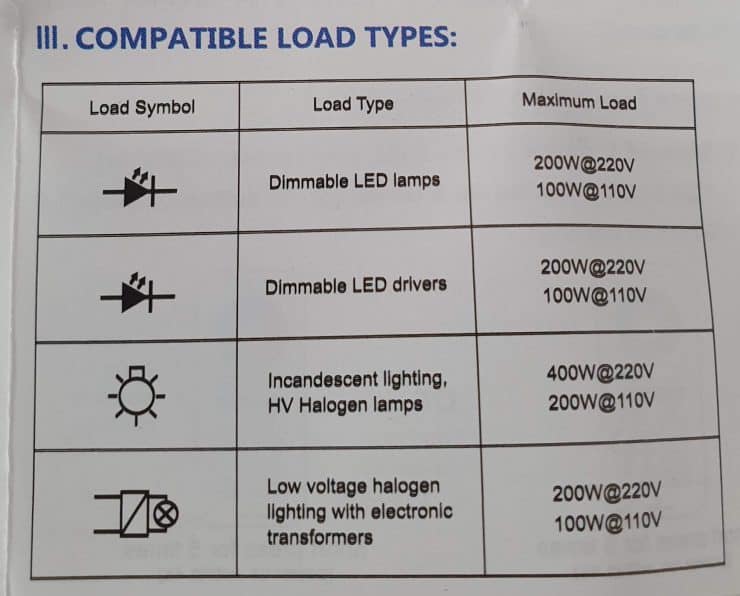A TRIAC lighting control might sound like something out of an old episode of Star Trek, but it’s actually one of the original ways for controlling dimmable lighting.
As the world has moved towards the LED standard, TRIAC dimmers have fallen out of fashion. However, there are still plenty of situations where you can make good use of a smart TRIAC dimmer. This begs the question, are there any smart brands out there that make TRIAC dimmers?
Yes, Lutron does have a line of smart TRIAC dimmers in their Diva product line. However the Caseta line of dimmers are not TRIAC. There are other smart brands out there with options as well. This guide is going to get you up to speed with everything you need to know about TRIAC dimmers, their alternatives, and how you can get full control over your smart home’s lighting.
What Is A TRIAC Dimmer?
TRIAC stands for “Triode for Alternating Current.” But don’t let that technical sounding name scare you off. We’re going to translate all of the technical electrical engineering jargon into everyday speech. By the end of this section, you’ll be talking about TRIAC dimmers like a pro.
TRIAC dimmers are the old-school version of lighting control. These lighting dimmers were originally designed to handle incandescent light bulbs. Here’s the basics of what’s going on inside of these dimmer switches.

A TRIAC dimmer is designed to handle high levels of voltage and current. This is why you can often find TRIAC controls operating motors and fans. These dimers are powerful enough to handle more than just your standard home lighting.
Inside of a TRIAC dimmer switch you’ll find a circuit. This circuit has the ability to translate high-powered electrical currents into lower outputs. This means that the switch is capable of releasing only a percentage of the energy that enters the switch.
You might have already guessed why TRIAC dimmers have fallen out of fashion for our smart lighting. These dimmers were designed to handle the much greater demand required by outdated lighting technology. Modern LED lighting hardly uses any electricity and simply doesn’t need the kind of muscle that a TRIAC dimmer provides.
However, there are some benefits of TRIAC dimmers that make them useful for many smart home applications.
Benefits Of TRIAC Dimmers

In the old days of LED lighting, TRIAC dimmers were being phased out.
A TRIAC dimmer works, in part, by pulsing the electrical current headed to the light. In an incandescent light, this causes the light to dim. However, LED lighting can only be on or off. Pulsing the current to these lights can damage them or cause them to flicker.
With this in mind, could there be any advantages of using TRIAC dimmers today?
The answer is yes.
Both LED lights and TRIAC dimmers have advanced greatly from those early days. Modern TRIAC dimmers are now able to handle dimming for LED lights as well as conventional lighting. This makes them a great option for mixed-use systems that have LED lights as well as non-LED lights installed:

There are plenty of corner cases where LED lights just don’t work. LED lights often miss the mark in certain historic settings, with particularly old lighting equipment, as well as certain industrial or technical lighting devices. In these cases, a TRIAC dimmer can be the exact solution you’re looking for.
TRIAC dimmers are also ideal for hardwired lighting. Even if a hardwired lighting fixture uses LED bulbs, it can still need a TRIAC dimmer switch to function properly. This has to do with how the hardwired fixture draws electricity.
TRIAC dimmers also have one sneaky benefit that we hinted at earlier on.
Because TRIAC dimmers can handle so much more power than modern LED dimmers, they can be used to control the energy going into more than just lights. TRIAC dimmers are great for controlling fan speeds as well as motor speeds. If you were looking to have a smart fan control or a smart motor control, a TRIAC dimmer can give you some interesting options to really expand what your smart home is capable of.
We’re living in a moment where there is more smart tech than ever before. Things that, even a few years ago, used to be cutting edge DIY projects are now out-of-the-box technology. A smart TRIAC dimmer puts some of this DIY excitement back in your hands.
If you’ve got some old-fashioned lighting you just don’t want to part with, or you’re looking to play in the smart home DIY sandbox, a TRIAC dimmer can open up a whole new world of potential for you.
So, are there any smart tech companies out there braving the wilds of making their own TRIAC dimmers?
Does Lutron Offer TRIAC Dimmers?
Yes, well, sort of.
Caseta is one of Lutron’s many product lines. Caseta covers a wide range of products and is a great choice for the majority of today’s LED-based home lighting systems. However, Caseta does not have a TRIAC dimmer.
There’s good news here for individuals who love the Lutron brand and are still looking for a smart switch that works with their TRIAC needs. Lutron has another line of products called Diva. One of the Diva switches is fully capable of working with TRIAC systems.
This Lutron dimmable switch was designed specifically to work with systems that use both LED lights as well as halogen and incandescent bulbs. Because it is a TRIAC dimmer, it is fully capable of working with a wider range of lighting systems than the Lutron Caseta dimmers.
It’s also got all of the smart features that you would expect from the Lutron system. These TRIAC switches can be fully integrated with the rest of Lutron’s gear and that means they will fully sync up with your smart home as well.
If the Lutron brand isn’t really your thing, you’ve got some more options when you’re looking for a smart TRIAC dimmer.
Alternative Smart Switches That Are Also TRIAC Dimmers
Lutron is probably the biggest and one of the best names in town when it comes to finding a smart dimmer switch. However, there are newcomers to the field that are making their own name and taking unique approaches to dimming TRIAC lights with smart technology.
Let’s take a look at a few of the competitors.
GLEDOPTO’s Triac Dimmer
GLEDOPTO’s Triac Dimmer works well with a range of lighting types (including both LEDs, halogen and incandescent lights) and it is ZigBee based so it can be controlled with the Hue Bridge or 4th Gen Echo devices.
I tested this out myself and it works really well:
Yoswit Smart Dimmer Module Works
The first two smart dimmer switches on our list aren’t really dimmer switches.
Rather than replacing the switch on your wall, these Yoswit TRIAC modules are wired directly into the lighting unit itself. They do not have any physical buttons that you can press to control the lighting. Rather, they integrate with your smart home system and give you direct control over your lighting.
This dimmer module connects to your smart home using a Bluetooth mesh network. This will free up some valuable Wi-Fi bandwidth while still giving you control over your lighting.
The biggest downside to mention with these first two dimmer modules is that there are no physical buttons. They can only be controlled through apps or using voice controls through either Amazon’s Alexa or Google Assistant.
Harolux Smart Dimmer
The Harolux Smart Dimmer is another dimmer module like the first one on our list. It gets directly wired into your lighting and gives you a smart control option without having to change the switches on your walls:
These solutions can be a great fix for lighting that doesn’t have a readily available switch. External lighting is a great example of a light fixture that could use a TRIAC dimmer, but might not have a very convenient switch to use.
This dimmer uses Wi-Fi and Bluetooth to connect into your smart home system.
Overall, dimmer modules provide a lightweight solution for dimming lighting that smart switches just can’t work with. If you’re up for a little bit of a challenge when it comes to installing these modules, you’ll be rewarded with a seamless smart home system.
Smart Touch LED Dimmer Switch
The Smart Touch LED dimmer switch is a TRIAC switch that also gives you an alternative to Lutron.
Unlike the first two dimmer modules we mentioned, this one is actually a proper wall-mounted light switch.
The Smart Touch option has a distinctly different style than Lutron. Well the Lutron switches are designed with a modern and understated style, this light switch has clearly labeled buttons and a more open approach to lighting control.
If you’re looking for something that can be easily navigated with very visible controls, the Smart Touch TRIAC dimmer could be a great option for you.
The Smart Touch switch works using its own app available for both Apple and Android. It also works with most common smart home systems including those offered by Google and Amazon.
Now let’s take a look at some alternatives to TRIAC dimmers why you might want them.
Alternatives To TRIAC Dimmers
As we mentioned at the top of this article, TRIAC dimmers are on their way out. Modern LED technology uses very little electricity and is quickly becoming the standard for home lighting. This means that, as more systems transition over to LED lights, the need for TRIAC dimmers will naturally go down.
An ELV or an MLV dimmer might be a better choice for you.
ELV Dimmers
ELV dimmers are the standard when it comes to dimming LED lighting. Lutron Caseta is one of the leading brands of these types of LED light dimmers.
In fact, most of the smart lighting technology out there was built with ELV in mind. If you can dim an LED light, it’s likely that it was designed to be dimmed with an ELV dimmer.
Here’s what gives it all the way. ELV stands for “electronic low-voltage.” This is exactly what LED is all about.
MLV Dimmers
MLV stands for magnetic low-voltage. These are dimmers that are designed to work with specific types of lights that use magnetic drivers in their systems. Older chandeliers and fluorescent lighting banks are two examples of where you can usually find an MLV dimmer switch.
Lutron Caseta tends to work with many MLV lights, but it might not work well with yours. You’ll need to look into the specifics of your lighting to see if Caseta can work with your MLV lighting.
There are other smart brands that have MLV options like Fibaro and Aeotec.
There’s a smart dimmer out there that can help you fine-tune your smart home system.

Hi Tristan – Thanks for your article about dimmers. Can you give me some advice about my situation? I am about to mount 175 ft. of AC plug-in LED strip lighting (bought at LED Supply, “AC Plug-In LED Strip Lights, cool white”, to be attached to the perimeter of my outdoor pergola. The end of the LED strip has a standard AC plug. So my electrician will put and outdoor AC outlet on the external wall of the house, right next to the top of the pergola, about 12 ft. high. All OK, so far… now, my uncertainty. How do we turn the LED strip lights on / off, and dim them (yes, the LED strip lights are dimmable). Lutron has an outdoor plug that is only on / off, not dimmable. What dimmer product will connect to the outdoor AC outlet, and allow me to control my LED strip lights? Because the dimmer switch will be mounted inside (second floor), near the external AC outlet (12 ft. high), we will want to be able to control the on / off and dimming function from the deck, which will be about 20 ft away, so we will want some sore of remote controllability – either Wi Fi or Bluetooth or something else. I saw a switch on the LED Supply website, “WiFi TRIAC LED Dimmer Switch”. Will this work and meet my needs. Do you know if Lowe’s or Home Depot offer something? Thank you for considering this.
That’s a good question. Your project sounds awesome – it’ll be nice to have such a long length of LED strip lights around your perimeter. Regarding how to dim it – usually dimming is quite product-specific. For example, Philips Hue’s dimming capability would require a ZigBee-specific dimmer switch or app control. LIFX’s dimming capability would require the LIFX app (or it being paired to Amazon Alexa, and then a voice command being issued).
So you’d probably have to look at the exact product, and see how it dims down. And also see whether it allows third-party control of its dimming capability.
If it lists “smart” functionality, then you might be able to use something like a WiFi/TRIAC dimmer switch – but again, it will be very product specific.
If, however, it doesn’t have “smart” functionality or third-party control, it might be worth checking whether a product like ‘Insteon’s Plug-in Dimming Module’ would help.
Hi Tristan,
I have a Lutron Caseta wireless dimmer switch model PD-6WCL that worked fine for 2 years. But it recently failed out. After troubleshooting, the problem is the triac failed out.
I can not find the replacement part on the web. The original triac part number is 130362 PJA1823 B5 3315, manufacturer NXP or WeEn. Another customer has the same problem. Do you know if triac BTA-08 or BTA-12 would be a good replacement? Thank you for your advise.
Hi Marcel,
Sorry to hear that your Caseta’s triac module failed. Unfortunately I’m not sure of the exact replacement part that you require. This comment is now published though (live on the page), so if anyone knows the exact part required, they can update it here.
Thanks,
Tristan